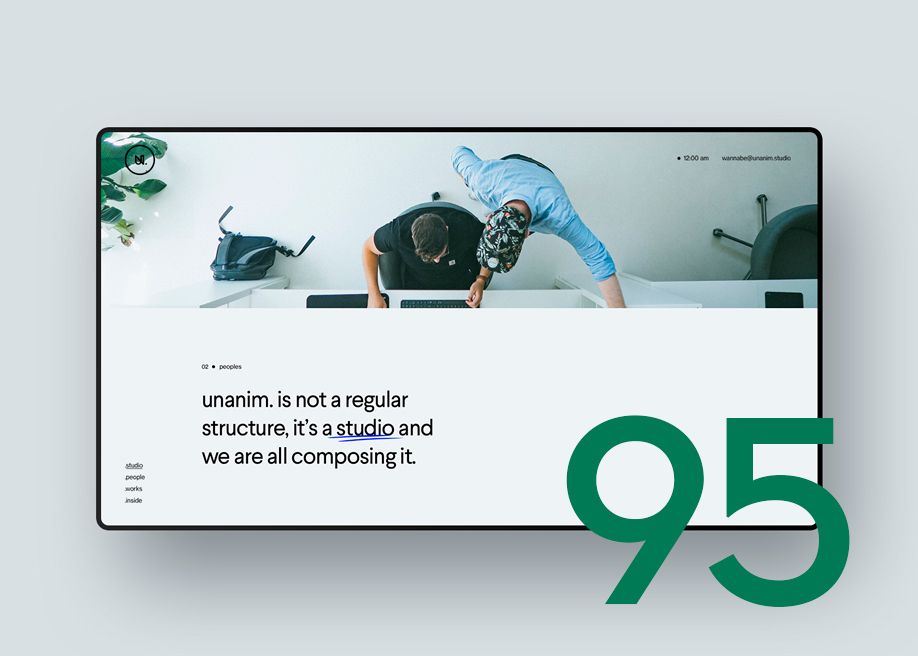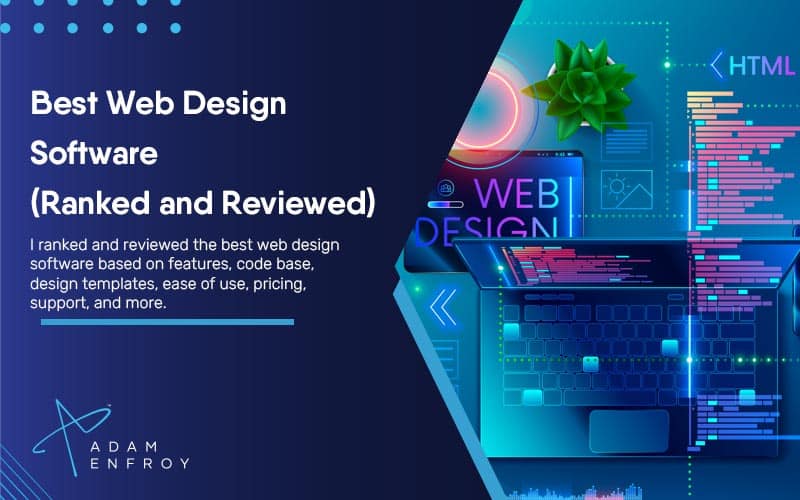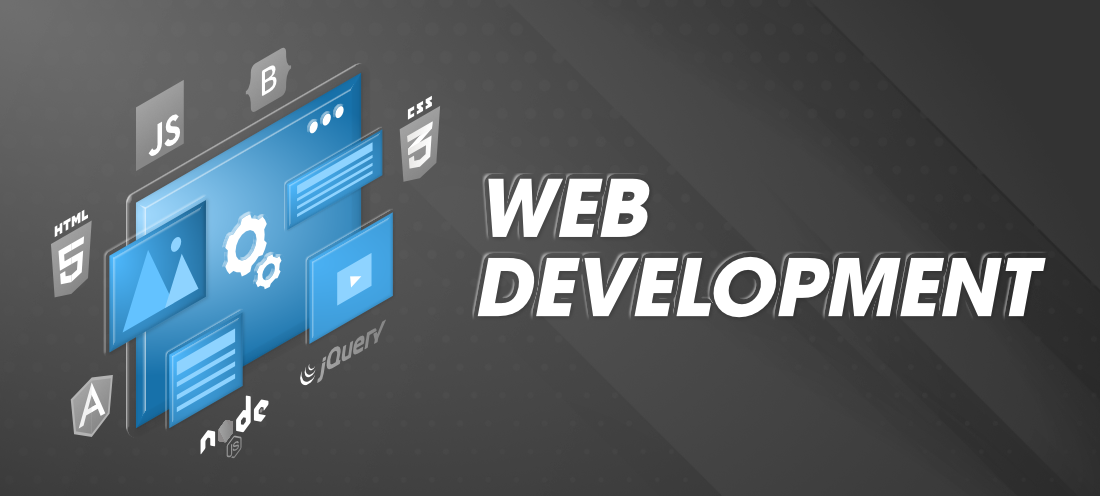All Categories
Featured
Table of Contents
- – Google Web Designer - Home Tips and Tricks:
- – Why Is Web Design Important? - 6 Reasons To I...
- – Web Developers And Digital Designers - Bureau...
- – The Leader In Website Design – Squarespace Ti...
- – What Is Web Design (And How Do I Get It Right...
- – Responsive Web Design - A List Apart Tips and...
- – Siteinspire - Web Design Inspiration Tips an...
- – Mrw Web Design - Wordpress Websites For Nonp...
- – What Does A Web Designer Do? - Careerexplore...
- – Web Design Services - Networksolutions.com T...
- – Arch Web Design: Top-rated Web Design Agency...
Google Web Designer - Home Tips and Tricks:
Quick summary Usability and the utility, not the visual style, identify the success or failure of a website. Because the visitor of the page is the only individual who clicks the mouse and therefore decides everything, user-centric design has actually developed as a basic method for effective and profit-oriented website design - web design frederick md.
and the utility, not the visual style, identify the success or failure of a site. Considering that the visitor of the page is the only individual who clicks the mouse and therefore chooses everything, user-centric design has actually become a basic approach for effective and profit-oriented website design. If users can't use a function, it may as well not exist.
g. where the search box must be put) as it has currently been carried out in a variety of short articles; instead we focus on the methods which, used appropriately, can lead to more advanced design choices and simplify the procedure of viewing provided info. Please observe that you may be thinking about the usability-related posts we have actually published before: Principles Of Excellent Website Style And Efficient Website Design Guidelines, In order to utilize the concepts properly we first need to understand how users connect with sites, how they think and what are the fundamental patterns of users' habits.
Why Is Web Design Important? - 6 Reasons To Invest In Site ... Tips and Tricks:
Visitors look at each brand-new page, scan some of the text, and click on the first link that captures their interest or vaguely resembles the thing they're searching for. There are large parts of the page they do not even look at. Most users look for something interesting (or helpful) and clickable; as soon as some promising prospects are found, users click.
If a page supplies users with high-quality material, they want to compromise the material with ads and the style of the website. This is the reason that not-that-well-designed sites with premium material acquire a lot of traffic over years. Content is more important than the design which supports it.

Users do not check out, they scan. Notification how "hot" areas abrupt in the middle of sentences. This is typical for the scanning procedure. Really easy concept: If a website isn't able to satisfy users' expectations, then designer failed to get his job done appropriately and the company loses cash. The greater is the cognitive load and the less user-friendly is the navigation, the more ready are users to leave the website and look for alternatives.
Web Developers And Digital Designers - Bureau Of Labor ... Tips and Tricks:
Neither do they scan website in a direct style, going sequentially from one site section to another one. Rather users satisfice; they pick the first reasonable option. As soon as they discover a link that looks like it might lead to the objective, there is an excellent chance that it will be instantly clicked.
It doesn't matter to us if we understand how things work, as long as we can utilize them. If your audience is going to imitate you're creating signboard, then style excellent billboards." Users want to be able to control their web browser and depend on the constant data presentation throughout the site.
If the navigation and site architecture aren't intuitive, the variety of question marks grows and makes it harder for users to understand how the system works and how to get from point A to point B. A clear structure, moderate visual hints and easily recognizable links can assist users to find their course to their objective.
The Leader In Website Design – Squarespace Tips and Tricks:

Since users tend to explore sites according to the "F"-pattern, these 3 statements would be the first aspects users will see on the page once it is loaded. The style itself is easy and user-friendly, to understand what the page is about the user needs to browse for the answer.
As soon as you have actually achieved this, you can communicate why the system works and how users can benefit from it. People will not use your website if they can't discover their method around it. 2. Do Not Waste Users' Perseverance, In every job when you are going to use your visitors some service or tool, try to keep your user requirements minimal.
First-time visitors want to, not filling long web kinds for an account they might never use in the future. Let users check out the site and discover your services without forcing them into sharing private information. It's not affordable to require users to enter an e-mail address to test the function.
What Is Web Design (And How Do I Get It Right)? - 99designs Tips and Tricks:
Stikkit is an ideal example for an easy to use service which needs almost absolutely nothing from the visitor which is inconspicuous and reassuring. And that's what you desire your users to feel on your web website. Apparently, Mite requires more. The registration can be done in less than 30 seconds as the kind has horizontal orientation, the user does not even require to scroll the page.
A user registration alone is sufficient of an impediment to user navigation to cut down on inbound traffic. Manage To Focus Users' Attention, As websites provide both fixed and vibrant content, some aspects of the user interface draw in attention more than others do.
Focusing users' attention to particular areas of the website with a moderate usage of visual components can help your visitors to get from point A to point B without thinking of how it in fact is expected to be done. The less enigma visitors have, the they have and the more trust they can establish towards the company the website represents.
Responsive Web Design - A List Apart Tips and Tricks:
4. Pursue Feature Direct exposure, Modern website design are generally criticized due to their method of guiding users with visually appealing 1-2-3-done-steps, big buttons with visual results etc. From the style viewpoint these components in fact aren't a bad thing. On the contrary, such as they lead the visitors through the site content in a really basic and easy to use method.
The site has 9 main navigation alternatives which are noticeable at the first glance. What matters is that the material is well-understood and visitors feel comfy with the way they connect with the system.
com gets straight to the point. No cute words, no overemphasized statements. Rather a rate: simply what visitors are searching for. An optimum option for effective writing is touse brief and concise phrases (come to the point as rapidly as possible), use scannable layout (classify the content, utilize several heading levels, utilize visual aspects and bulleted lists which break the circulation of consistent text blocks), usage plain and objective language (a promo does not need to sound like ad; provide your users some sensible and unbiased factor why they ought to utilize your service or remain on your website)6.
Siteinspire - Web Design Inspiration Tips and Tricks:
Users are rarely on a website to take pleasure in the style; moreover, most of the times they are searching for the details despite the design - web design frederick md. Make every effort for simplicity instead of complexity. From the visitors' point of view, the best website style is a pure text, without any advertisements or additional material blocks matching exactly the inquiry visitors utilized or the content they have actually been looking for.
Finch plainly presents the details about the site and offers visitors an option of alternatives without overcrowding them with unneeded content. Not just does it help to for the visitors, but it makes it possible to view the info presented on the screen.
Complex structures are harder to check out, scan, evaluate and work with. If you have the choice between separating two design segments by a visible line or by some whitespace, it's generally much better to utilize the whitespace service. (Simon's Law): the much better you manage to supply users with a sense of visual hierarchy, the much easier your material will be to perceive.
Mrw Web Design - Wordpress Websites For Nonprofits ... Tips and Tricks:
The exact same conventions and rules need to be applied to all elements.: do the most with the least amount of hints and visual elements. 4 major points to be considered: simpleness, clearness, diversity, and emphasis. Simplicity includes just the elements that are crucial for communication. Clarity: all elements should be developed so their meaning is not unclear.
Conventions Are Our Good friends, Traditional style of website components doesn't result in an uninteresting web site. In truth, as they reduce the learning curve, the requirement to figure out how things work. For example, it would be an usability problem if all sites had various visual discussion of RSS-feeds. That's not that different from our routine life where we tend to get used to basic principles of how we organize information (folders) or do shopping (placement of products).
understand what they're getting out of a site navigation, text structure, search placement etc. A case in point from usability sessions is to equate the page in Japanese (presuming your web users do not understand Japanese, e. g. with Babelfish) and offer your functionality testers with a task to find something in the page of various language.
What Does A Web Designer Do? - Careerexplorer Tips and Tricks:
Steve Krug suggests that it's much better to, however make the most of conventions when you don't. 10. Test Early, Test Often, This so-called TETO-principle should be applied to every web style project as use tests often provide into significant issues and concerns associated with a given layout. Test not too late, not insufficient and not for the incorrect factors.
Some important points to keep in mind: according to Steve Krug, and screening one user early in the task is much better than testing 50 near the end. Accoring to Boehm's very first law, mistakes are most regular during requirements and design activities and are the more pricey the later on they are eliminated.
That implies that you design something, test it, repair it and then evaluate it once again. There might be issues which have not been discovered during the very first round as users were almost obstructed by other problems. usability tests. Either you'll be indicated the issues you have or you'll be indicated the lack of major style flaws which remains in both cases a beneficial insight for your job.
Web Design Services - Networksolutions.com Tips and Tricks:

This holds for designers. After you've dealt with a website for few weeks, you can't observe it from a fresh perspective anymore. You know how it is developed and for that reason you know precisely how it works you have the wisdom independent testers and visitors of your site would not have.
It can be linked to other areas such as graphic design, user experience, and multimedia arts, but is more aptly seen from a technological viewpoint. It has become a big part of people's daily lives. It is hard to envision the Web without animated graphics, various designs of typography, background, videos and music.

Throughout 1991 to 1993 the Internet was born. Text-only pages could be viewed utilizing a simple line-mode internet browser. In 1993 Marc Andreessen and Eric Bina, created the Mosaic internet browser. At the time there were multiple internet browsers, nevertheless most of them were Unix-based and naturally text heavy. There had actually been no integrated method to graphic design elements such as images or noises.
Arch Web Design: Top-rated Web Design Agency For Saas ... Tips and Tricks:
The W3C was developed in October 1994 to "lead the World Wide Web to its full capacity by developing common procedures that promote its evolution and ensure its interoperability." This discouraged any one business from monopolizing a propriety web browser and shows language, which could have altered the result of the Web as a whole.
As this has actually happened the innovation of the web has actually likewise moved on. There have actually likewise been significant modifications in the way people utilize and access the web, and this has altered how sites are created.
Learn more about Lovell Media Group LLC or TrainACETable of Contents
- – Google Web Designer - Home Tips and Tricks:
- – Why Is Web Design Important? - 6 Reasons To I...
- – Web Developers And Digital Designers - Bureau...
- – The Leader In Website Design – Squarespace Ti...
- – What Is Web Design (And How Do I Get It Right...
- – Responsive Web Design - A List Apart Tips and...
- – Siteinspire - Web Design Inspiration Tips an...
- – Mrw Web Design - Wordpress Websites For Nonp...
- – What Does A Web Designer Do? - Careerexplore...
- – Web Design Services - Networksolutions.com T...
- – Arch Web Design: Top-rated Web Design Agency...
Latest Posts
Ui Ux Developer Frederick MD
Modern Website Designs - Best Web Page Designers Tips and Tricks:
Web Design - Entrepreneur Tips and Tricks:
More
Latest Posts
Ui Ux Developer Frederick MD
Modern Website Designs - Best Web Page Designers Tips and Tricks:
Web Design - Entrepreneur Tips and Tricks: